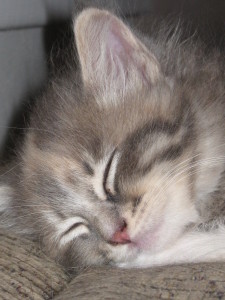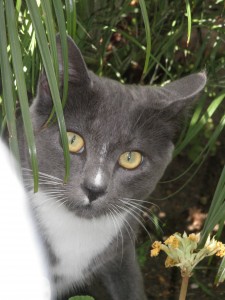 So what do we know about our cats’ whiskers, anyway? If you’re like me, you’ve heard that a cat’s whiskers are as long as their body is wide and this helps them to determine when a space is too small for them to enter. Supposedly, the cat decides, “If my whiskers touch the sides, I won’t fit into that space.” That’s a hard one to swallow when you’ve seen cats climb into some mighty small places. If you’re like me, you wonder if a cat’s whiskers grow longer as the cat gains weight.
So what do we know about our cats’ whiskers, anyway? If you’re like me, you’ve heard that a cat’s whiskers are as long as their body is wide and this helps them to determine when a space is too small for them to enter. Supposedly, the cat decides, “If my whiskers touch the sides, I won’t fit into that space.” That’s a hard one to swallow when you’ve seen cats climb into some mighty small places. If you’re like me, you wonder if a cat’s whiskers grow longer as the cat gains weight.
The head of general practice at the University of Melbourne’s U-Vet Veterinary Hospital, Dr. Leonie Richards says that a cat’s whiskers certainly have value—they are navigating tools, indicators of impending danger and, for other critters, an indicator of mood.
Have you ever counted your cat’s whiskers? Dr. Richards says there are typically a dozen of them in four lines on each cheek. Did you know that the long hairs over a cat’s eyes, on their chins, and behind their front paws are also considered whiskers? She says that all of these whiskers “help cats work out where they are spatially.” Although the whiskers themselves have no feeling, where they are embedded has many nerve endings which makes the whiskers “ideal sensory organ.”
A cat’s whiskers are so sensitive they can detect airflow which helps them to determine when they’re close to a wall in the dark, for example.
Ever wonder what happens to a cat when her whiskers are cut off? You don’t want to find out. Dr. Richards says it makes them disoriented. She says that sometimes a veterinarian will have to cut a cat’s whiskers, but that they grow back in a couple of months.
My mother’s cat, Smokey, had these nice long, white eyebrow whiskers when he was a  kitten. Within a few weeks, these whiskers had disappeared. Finally new tiny black hairs—not really whiskers—grew back. No one knows what happened to his original white whisker eyebrows.
kitten. Within a few weeks, these whiskers had disappeared. Finally new tiny black hairs—not really whiskers—grew back. No one knows what happened to his original white whisker eyebrows.
Sometimes you find whiskers around the house. Yes, cats do shed their whiskers. I’ve heard it’s good luck to find a cat’s whisker. When I find one, I usually save it.
So how can you tell a cat’s mood by his whiskers? You’ve probably already noticed that when the whiskers seem relaxed—they droop down a little—she is contented. When they are pinned back against her cheeks, she’s fearful, and when they are straight forward, it could mean she’s angry. I’ve seen whiskers in the straight-forward position when my cats were watching a bird through the window. So I wonder if straight-forward whiskers also denote excitement.
I mentioned earlier that I wondered if a cat’s whiskers grow longer when he gains weight. According to Dr. Richards, they do not. She says that a cat’s whiskers are less useful to an obese cat and this is just one reason why she and most other experts recommend maintaining your cat’s weight.





